David's Astronomy Pages (All Sky Camera)
Aurora on night 2025-01-01 / 2025-01-02
Aurora
2024-12-31
Aurora
Page
Home
Page
Aurora
2025-01-04
David's Astronomy Pages (All Sky Camera)
|
Aurora 2024-12-31 |
Aurora Page |
Home Page |
Aurora 2025-01-04 |
Aurora Notes
Night Summary (Keogram) Plot AllSky Pictures Videos Magnetometer Stack Plots (for reference) Planetary K-Index Plot (for reference) Aurora Forecast, NOAA/Ovation (for reference) 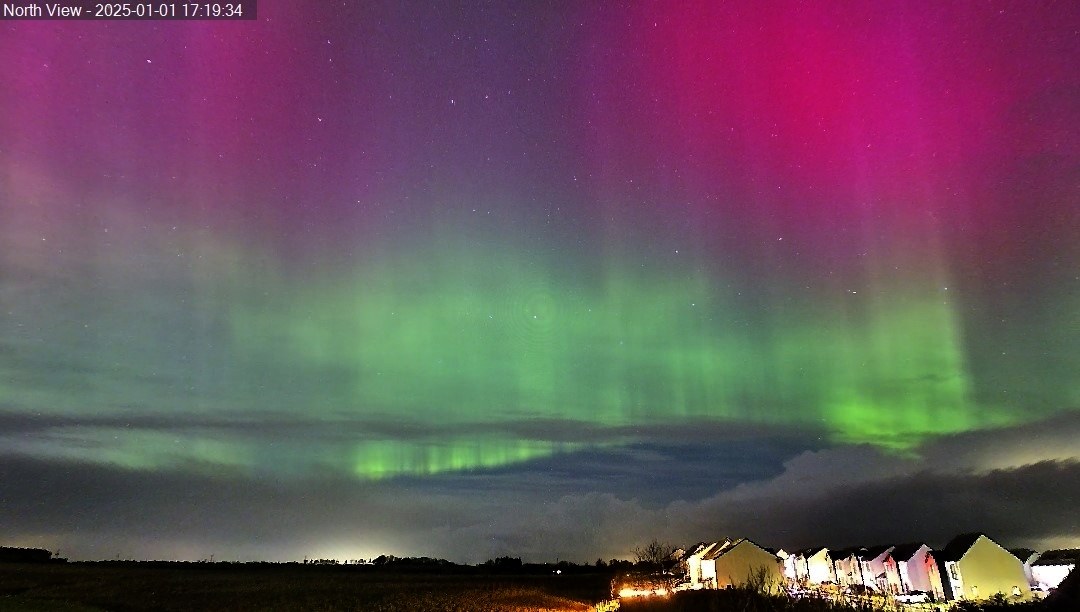
- Auroral activity on the night 2025-01-01 / 2025-01-02 associated with geomagnetic activity up to KP8 due to a CME striking the earth's magnetic field.
Skies in NE Scotland were generally cloudy with frequent snow showers but breaks in cloud captured the main peak together with some later activity.
Activity was visible from the Clair Observatory (+57N) on 2025-01-01 from 17:12 to 2025-01-02 00:15 UT a total period of 8 hours but interrupted by cloud & snow showers. Peak activity was a 30 min period from 17:15 to 17:45 UT with a second peak at around 23:20 UT
Observed activity comprised rapidly moving curtains and rays up to 55° altitude.
The aurora display was recorded using the Observatory's new Tapo C325WB Colour Night Vision Camera, with images processed in real time by a new AstroColorCam program built for handing the frames captured by iSpy.
Images and video below compare colour images captured by the new Camera, with the black/white images captured using the existing AllSky Camera at approximately the same time.
- Scandinavia magnetometers record short-lived but very intense activity at 17:30 to 18:10 UT. - Telescope Images from previous night 2024-12-31 >>
| Night Summary Plot - North Sky (2025-01-01) Times on plot are local times (GMT = UTC +00h ) Aurora noticeable on keogram from 17:15 to 17:45 UT (distinct), 20:15 to 22:20 UT (faint) & 23:15 to 00:15 UT (distinct) |
 |
| Night Summary Plot - North Sky (2025-01-01) Times on plot are local times (GMT = UTC +00h ) Aurora not obvious on b/w keogram due of the cloudy intervals |
 |
Back to Top
| Panoramic View - Northern Sky |
| 2025-01-01 17:11 UT (GMT) No visible aurora. In detail there is a very faint auroral arc which is barely perceptable in image but gradually builds over the next 2 minutes. |
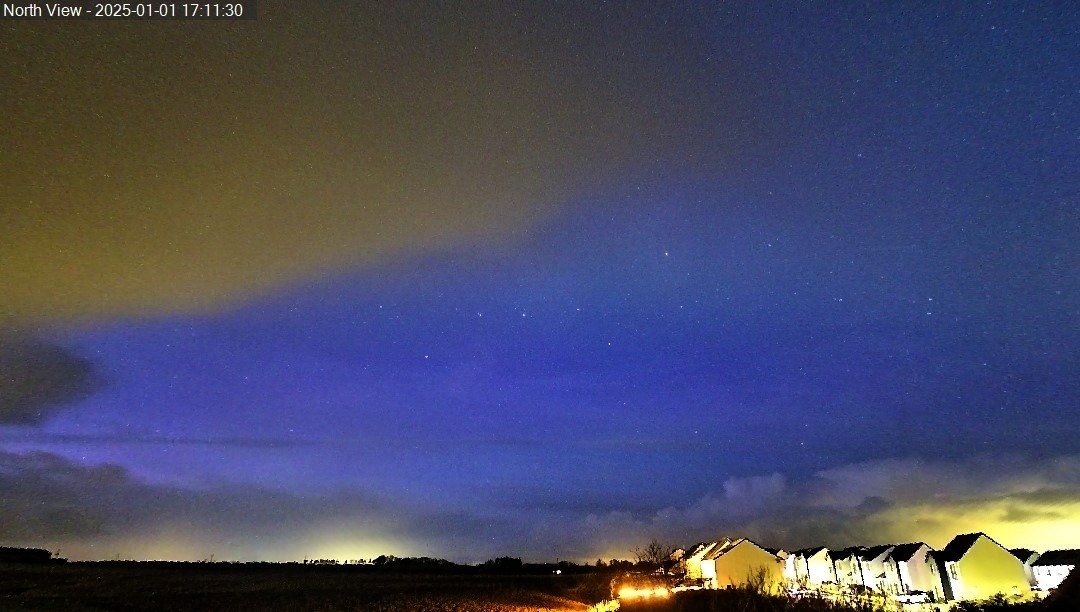 |
| 2025-01-01 17:13 UT (GMT) Very rapid appearence of green auroral curtains at 15-25° altitude Bright area off aurora in NW Sky (AllSky North Panoramic Views affected by water drops on the camera following earlier snow shower) |
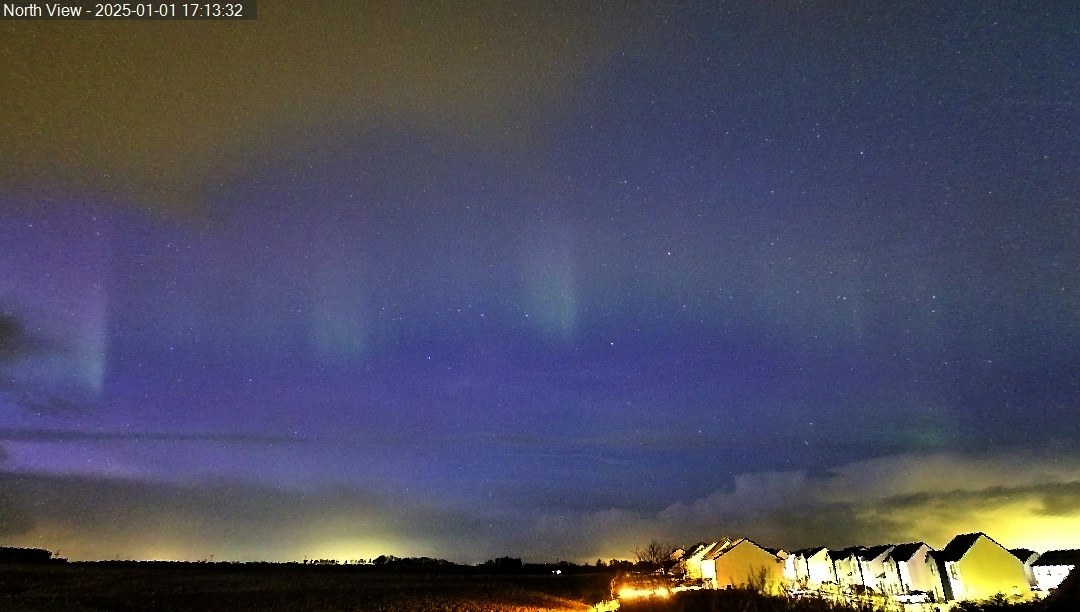 |
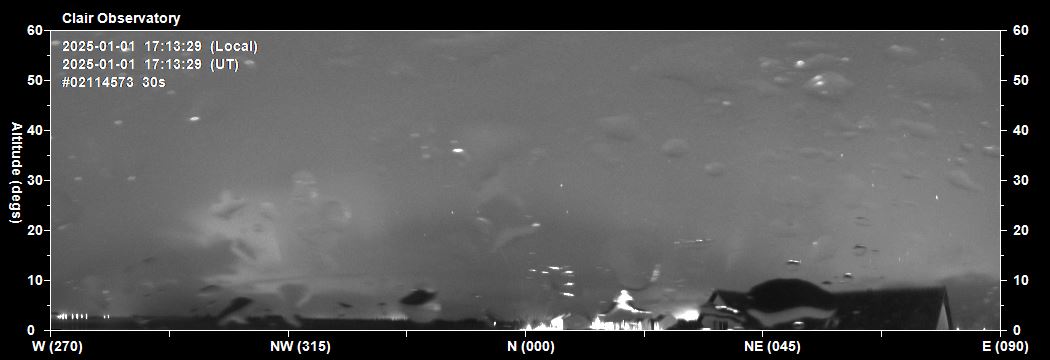 |
| 2025-01-01 17:16 UT (GMT) Very rapid development of aurora. This image (17:16) with green and violet rays to over 40° altitude is just 4 minutes later than the image (17:13) above Brightest aurora in WNW direction. |
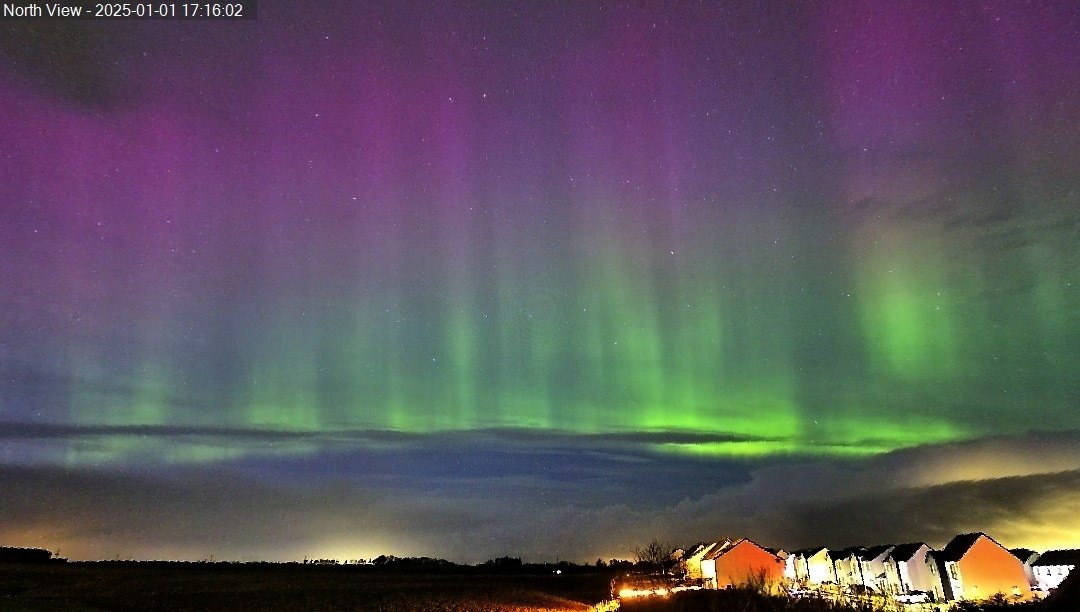 |
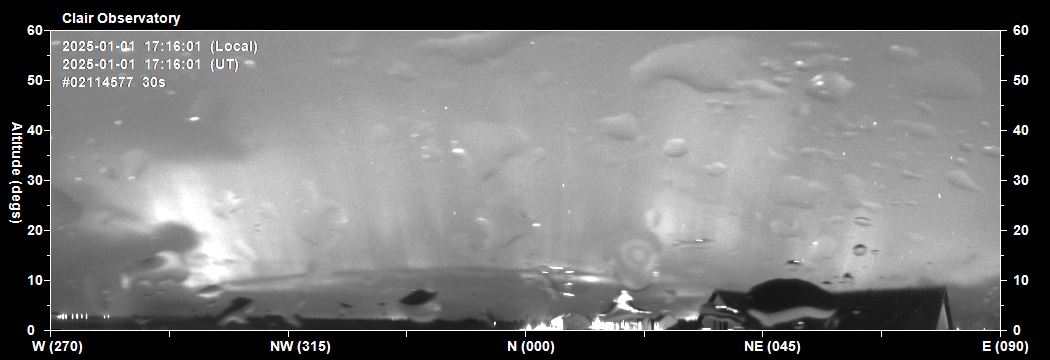 |
| 2025-01-01 17:19 UT (GMT) Further increase in auroral activity, very fast moving curtains and rays, red colours appearing |
 |
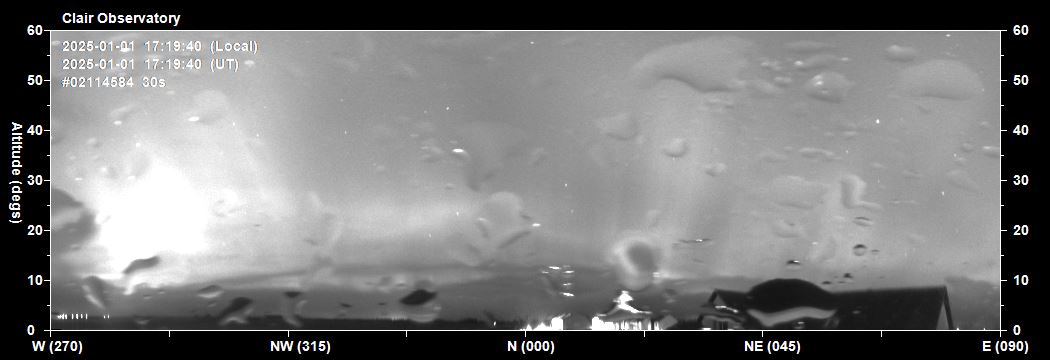 |
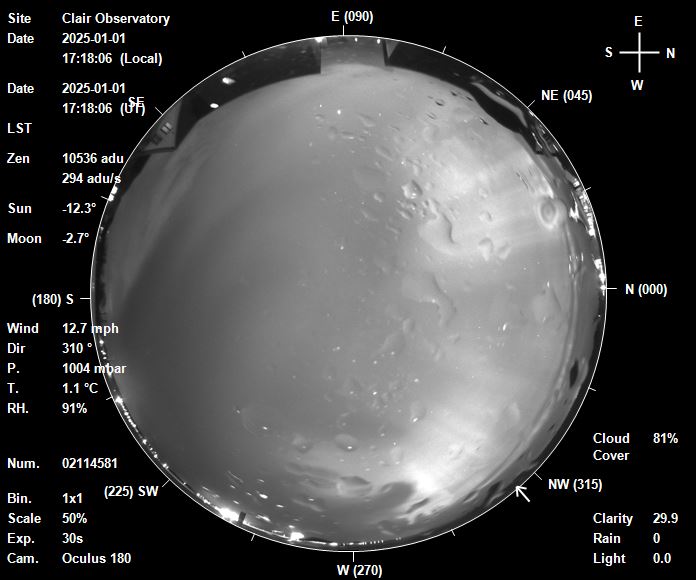 |
| 2025-01-01 17:40 UT (GMT) Lovely pastel colours. Here we see green aurora above pink/crimson aurora. |
 |
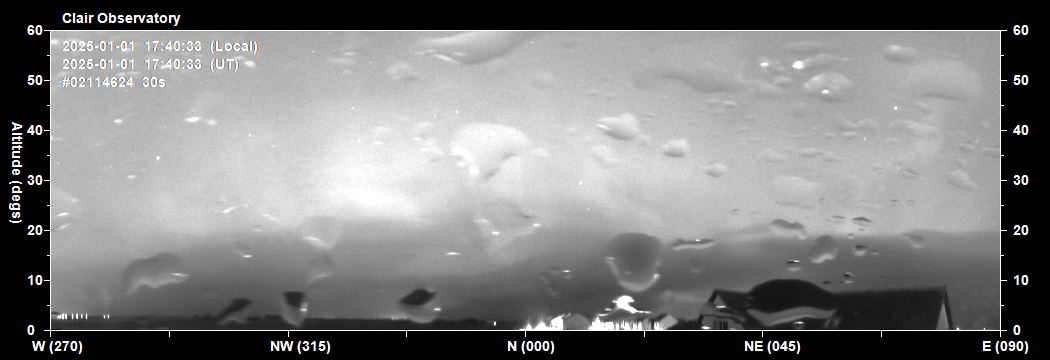 |
| 2025-01-01 17:48 UT (GMT) Pink aurora to over 55° altitude being rapidly covered by approaching cloud/snow shower |
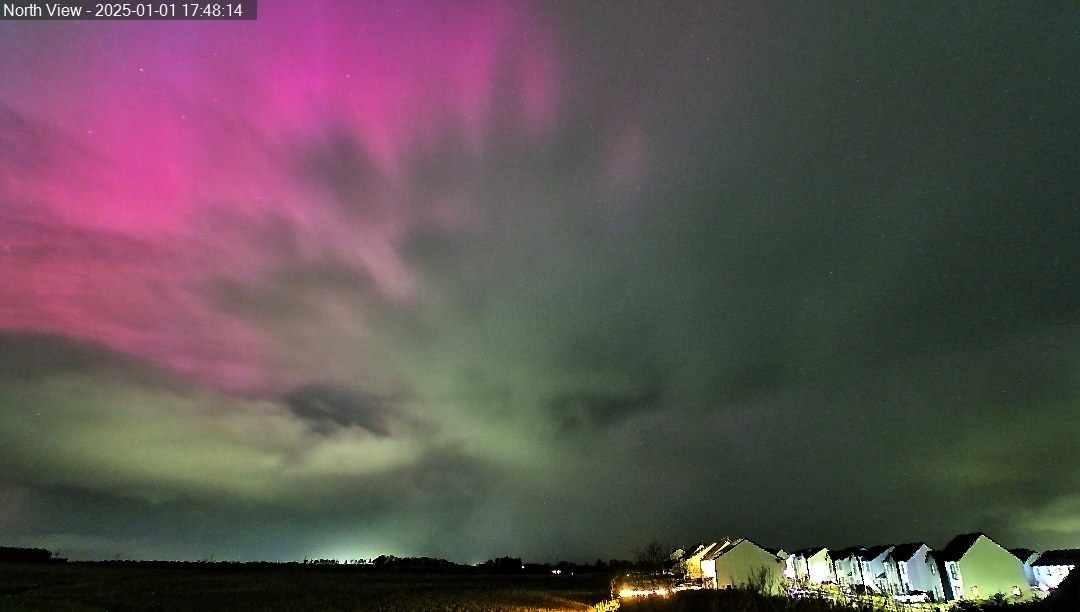 |
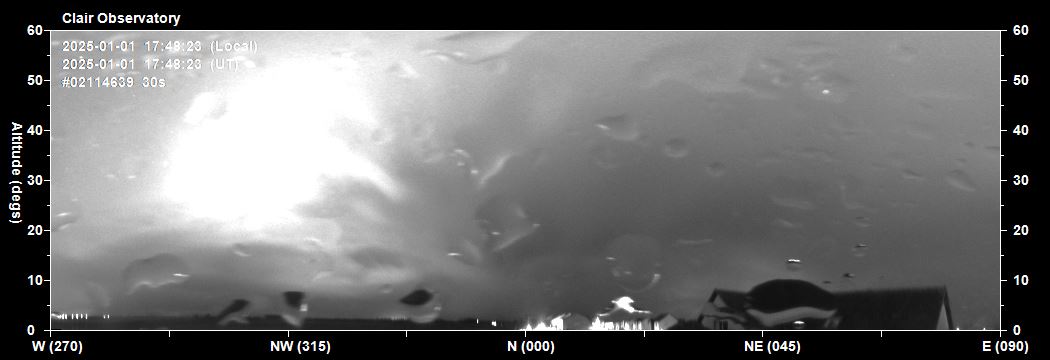 |
| 2025-01-01 21:17 UT (GMT) Auroral activity continuing, seen as a general glow in between cloud/snow showers. (artifacts on camera due to snow/water on bottom of lens) |
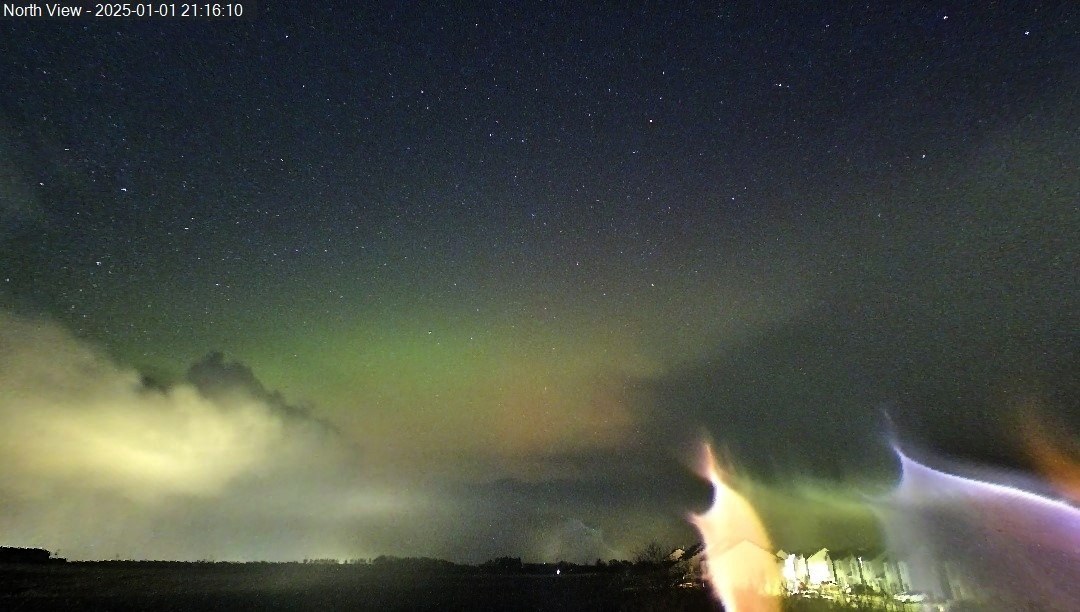 |
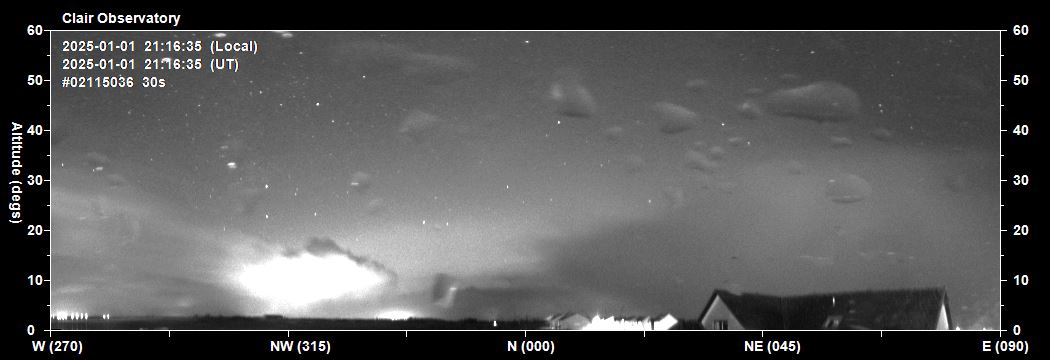 |
| 2025-01-01 23:21 UT (GMT) Secondary peak in activity |
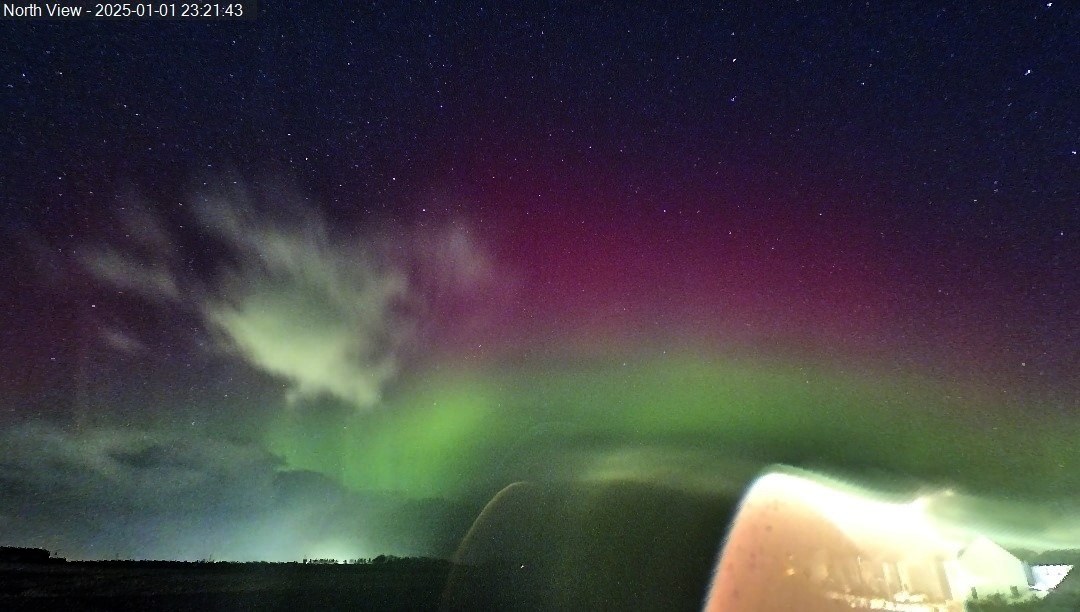 |
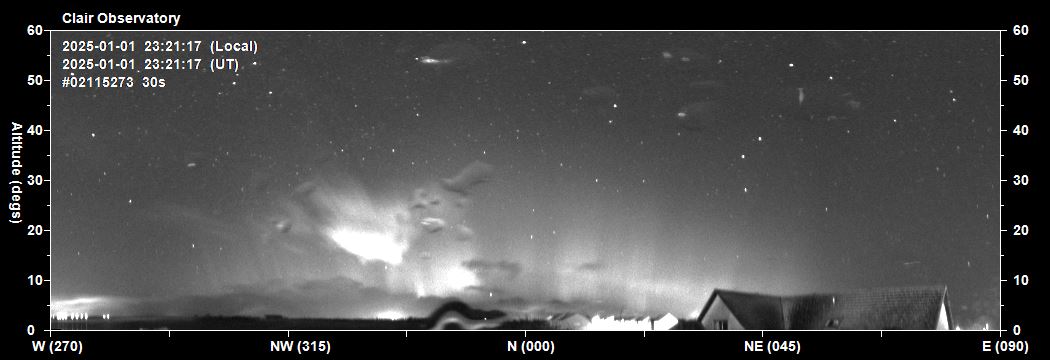 |
| 15s frames taken with Tapo C325WB Colour Camera
vs 30s wider-field exposures taken with Oculus All Sky Camera |
Back to Top
| Video: North panoramic view, 9.0 hr period 2025-01-01 17:00 to 2025-01-02 02:00 UT (GMT) Frames #2114547 to 2115576 Aurora display interrupted frequently by snow showers |
| Link to .mp4 video file (12.6 MB) |
|
0.0s
/ 0.0s
|
| Video: North Cam view, 0.75 hr period Showing peak part of the display 2025-01-01 17:10 to 17:53 UT (GMT) |
| Link to .mp4 video file (1.8 MB) |
|
0.0s
/ 0.0s
|
| Video: North Cam view, 6.5 hr period Showing latter part of the display 2025-01-01 19:30 to 2025-01-02 02:00 UT (GMT) |
| Link to .mp4 video file (11.4 MB) |
|
0.0s
/ 0.0s
|
Back to Top
| Magnetometer Stack Plots from Scandinavia
(ordered by latitude) H Component - 2025-01-01 / 2025-01-02 Short-lived but very intense activity at 17:30 to 18:10 UT Note: Geomagnetometer activity at rvk (Rorvik, 64.95N), dob (Dombas, 62.07N), sol (Solund, 61.08N) and kar (Karmoy, 59.21N) stations are used as indicators for potential auroral activity that may be visible from my Observatory situated at latitude 57.32N (Map of Stations) |
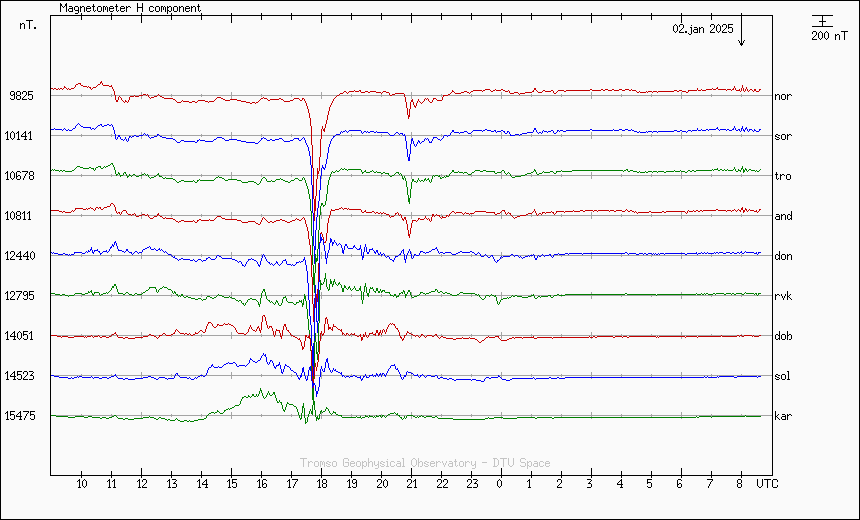 |
|
Graphed using 'make your own graph' facilities at
https://flux.phys.uit.no/compose/ (Tromsų Geophysical
Observatory ) Original data from Tromsų Geophysical Observatory (TGO), DTU Space (Technical University of Denmark) and Finnish Meteorological Institute (FMI) Data also displayed on SpaceWeatherLive's Europe Stackplot at http://www.spaceweatherlive.com/en/auroral-activity/magnetometers). |
Back to Top
|
Estimated 3 hour Planetary K-Index (NOAA) (from http://services.swpc.noaa.gov) Planetary-k-index_2025-01-01 / 2025-01-02 Not captured |
|
SAMNET's magnetometer at Crooktree, Near Torphins
(Chart
Explanation) - Magnetometer activity on the night 2025-01-01 / 2025-01-02 showing generally high levels of activity between 14:00 and 19:00 UT, with very intense peak (>900 nT) between 17:00 & 18:00 UT |
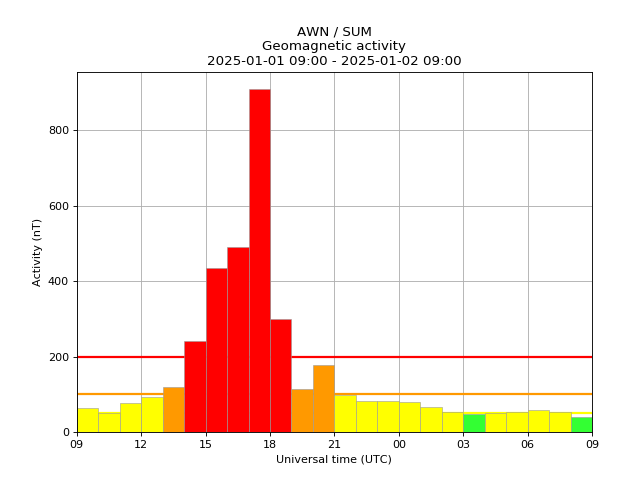 |
|
8-day Lerwick Observatory K Index Showing max K8 on the evening of 2025-01-01 |
 |
|
Planetary K-Index and other information (Space Weather
Prediction Centre) shows elevated (KP4+) indices on 2024-12-31 & 2025-01-01 due to CME striking the earth's magnetic field with KP Index reaching KP8 on the evening of 2025-01-01. |
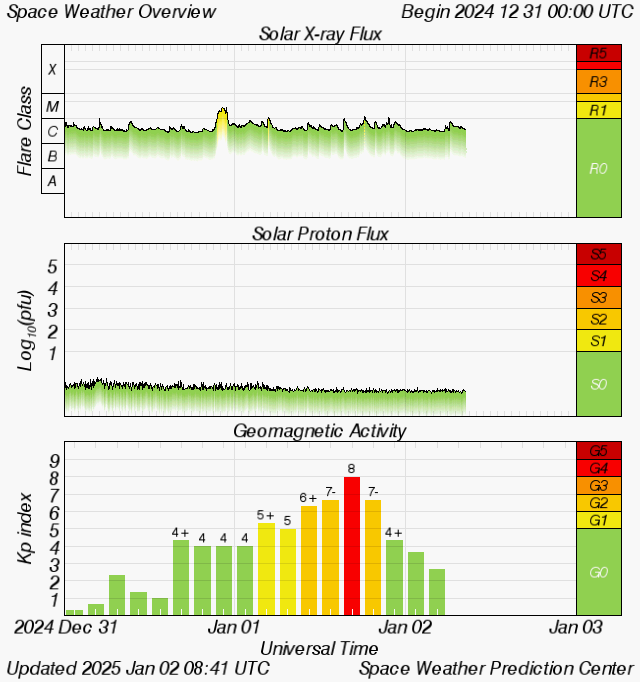 |
Back to Top
|
Aurora Forecast for 2025-01-01 18:00 UT (GMT) (From Space Weather Prediction Centre, http://www.swpc.noaa.gov ) |
|
Not available due to an issue with NOAA Ovation Pictures which is stuck on the forecast 2024-12-31 23:56 UT |
Back to Top
| This Web Page: | Aurora - 2025-01-01 / 2025-01-02 |
| Last Updated : | 2025-01-04 |
| Site Owner : | David Richards |
| Home Page : | David's Astronomy Web Site |